Dear Student Engineers,
As you embark on this exciting journey in the field of engineering, I want to remind you of the incredible impact you can have on the world. Engineering is not just about solving problems and creating new technologies; it's about improving lives, building sustainable futures, and making a difference in our communities.
Embrace every challenge with curiosity and determination, for it is through overcoming obstacles that you will grow and innovate. Never underestimate the power of collaboration and teamwork. The diverse perspectives and skills of your peers will enrich your learning experience and lead to more creative solutions.
Remember to stay passionate and resilient, for engineering is a field that requires both dedication and a love for continuous learning. Keep pushing the boundaries of what is possible, and never be afraid to ask questions or seek help when needed.
Your journey may be challenging at times, but always keep in mind the positive impact you can make. Stay inspired, and believe in your ability to shape the future.
Best regards,
--









Engineering Projects
Explore hands-on projects that enhance engineering education and skills.


Practical Applications
Our projects focus on practical applications in civil engineering, providing students with real-world experience and enhancing their understanding of theoretical concepts through demonstrations and interactive learning.
https://engineersindiasolutions.blogspot.com/2024/12/links-page-with-all-videos-recently.html


Video Demonstrations
We offer video demonstrations that illustrate key civil engineering concepts, helping students visualize and comprehend complex topics while reinforcing their learning through engaging visual content.
Experiment Highway engineering
Penetration Test For Bitumen
Introduction: Penetration or viscosity test is done to find out the hardness or viscosity of bitumen. It also determines the grade of bitumen.
This test is not considered suitable for road tar, because road tar has high surface tension and excessive amount of free carbon.
This test is done with a penetrometer, which can measure penetration upto 10th part of 1mm.
Object : To find the penetration value of the given bitumen.
Apparatus :
(1) Vessel- A cylindrical metal dish with flat surface having a diameter of 55.0mm and depth of 35.0mm.
(2) Needle- A straight, cylindrical, hardened steel rod having dimensions shown in Figure 1.
(3) Water bath- A water bath having minimum 10.0 litre capacity, controlled at 24.0-26.0°C in which the specimen is immersed such that the top surface of the specimen is at least 100.0 mm deep. The specimen is placed on a perforated embossment such that the bottom of the specimen is 50.0 mm above the bottom of the water bath.
(4) Piercing instrument- The piercing instrument should be of such a type that it does not offer any friction in the penetration of the needle and gives accurate result upto 10th part of 1mm.
(5) Thermometer- Thermometer capable of measuring upto 44°C with accuracy upto 0.2°C.
(6) Time measuring instrument - which can give measurement upto 0.1 second.
Theory : A needle of standard weight will sink in a lump of bitumen at a fixed temperature in a fixed period of time,
this measurement is called penetration. The weight of the piercing needle along with its attachment is 100 grams.
The lower the penetration reading, the harder the bitumen will be. This indicates the grade of bitumen.
Procedure :
(1) Test sample : Melt the material to a temperature higher than its softening point (bitumen should not be heated to a temperature higher than 90°C and tar to a temperature higher than 60°C). While melting the material, keep stirring it till it becomes free from air and water bubbles. The melted material should be filled in the vessel to a depth of at least 10.0 mm more than the estimated sinking. Protecting the sample from dust, cool it for 1 hour at 15-30°C in the atmosphere. This test is done at a temperature of 24.0-26.0 degrees Celsius (except in special circumstances). Now the above sample is kept in a tray in a water bath for 1-1.5 hours.
(2) The water of the water bath is filled in the transfer dish to such a depth that the vessel is completely filled. Now the sample is placed and the dish is placed in the piercing apparatus.
(3) The needle of the apparatus is cleaned with benzene and dried and attached to the weight. The total moving weight required is (100+0.25) to (100-0.25) grams which includes the needle, carrier and other attached weights.
(4) The needle is adjusted in such a way that its tip just touches the surface of the sample.
The needle can be adjusted by making the tip of the needle contact its shadow reflected through the bituminous material.
(5) Set the dial needle to zero or note the initial dial reading.
(6) Leave the needle in place for exactly 5 seconds.
(7) Adjust the penetrometer to measure subsidence.
(8) Thus note three different readings. The distance between the observation points on the surface of the specimen should not be less than 10.0 mm. After each test the specimen and the tray should be returned to the water dam and the needle should be washed with benzene and dried. In case of a material having subsidence more than 22.5, three readings should be taken on two similar test specimens and the needle should be left in the specimen after each observation to avoid disturbance.
Observation Table:
Actual test temperature =............
Average penetration value =.......
Result: Penetration value of bitumen is .....
Precautions:
(1) The container should not move while inserting the needle in the sample.
(2) The sample should be free from foreign matter.
(3) Penetration time should be exactly 5 seconds.
Analysis of Result:
Penetration test is very popular for finding the grade of bitumen in terms of its hardness. For example, 100/120 grade of bitumen means that the penetration value of standard sample of this bitumen is between 100 to 120. Grading of bitumen helps in determining its suitability for use in different climatic conditions and different types of construction works. According to the recommendation of Indian Road Congress, grades 30/40, 60/70 and 80/100 are suitable for bitumen macadam roads. To prevent softening in hot places, lower grades of bitumen like 60/70 are suitable and to prevent brittleness in cold places, higher grades of bitumen like 180/200 are suitable.
Special:
Penetrations less than 100 are indicated with a difference of 10 and penetrations
of 100 or more are indicated with a difference of 20.
Different grades of bitumen and their use are shown in the following table-
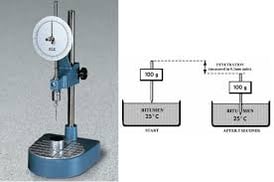

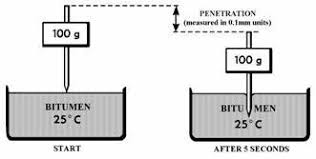

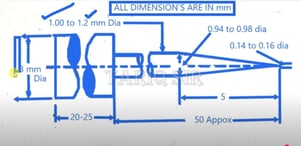

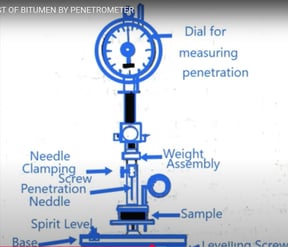



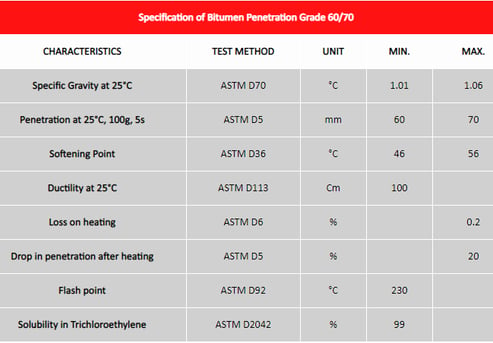

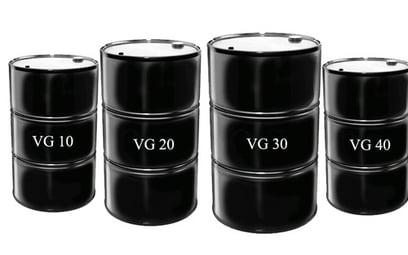

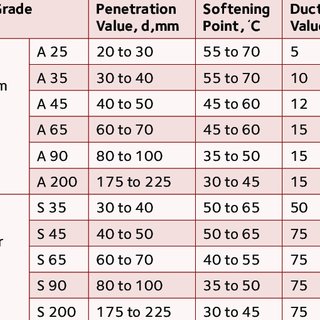

FOR HIGHWAY & BITUMEN VIDEO'S CLICK ON CONCTRETE TECHNOLOGY
TO BE CONTINUED
Learning
Empowering students through practical engineering education.
Support
Resources
info@civilengcloud.com
+918604752661
© 2025. All rights reserved.
